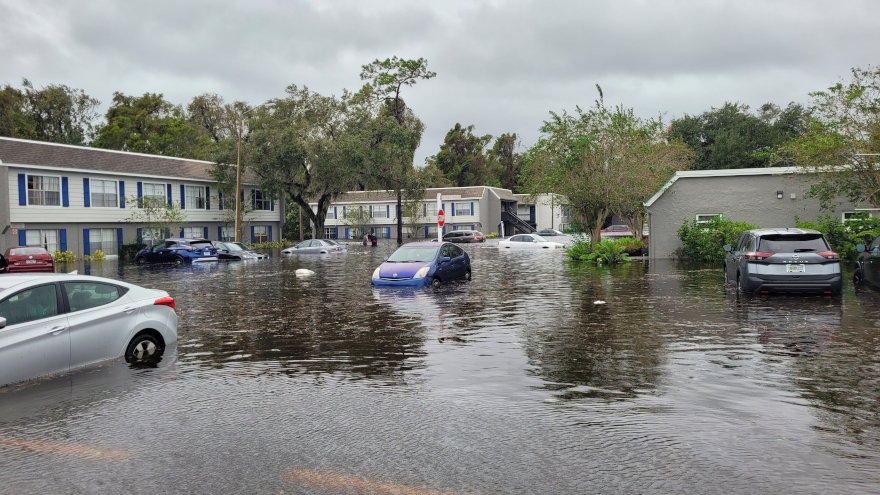Inside the numbers: Hurricane Ian’s vehicle damage impact

Flooding damage from Hurricane Ian in Florida. Editorial credit: america365 / Shutterstock.com
By subscribing, you agree to receive communications from Auto Remarketing and our partners in accordance with our Privacy Policy. We may share your information with select partners and sponsors who may contact you about their products and services. You may unsubscribe at any time.
Even before the arrival of Hurricane Ian, there were already some 400,000 vehicles on the road with previous water damage, according to CARFAX data.
The wrath of that storm, which led to flooding and other damage throughout Florida and the Carolinas, may have nearly doubled that number, the company said Monday.
CARFAX estimates flooding from Hurricane Ian may have caused water damage in upwards of 358,000 vehicles, and the company is urging shoppers to be on the lookout for these cars popping up for sale — in affected states and elsewhere.
“We are seeing these flooded cars show up all around the country, putting unsuspecting buyers at risk,” CARFAX spokesperson Emilie Voss said in a news release.
“Cosmetically these cars might look great, but if you don’t know what to look for, it’s nearly impossible to tell they are literally rotting from the inside out,” Voss said. “Floodwater can cause mechanical, electrical, health and safety issues in a vehicle even if it was submerged for only a short time.”
While CARFAX's news release was largely consumer-focused, auto auctions and dealers no doubt have to be on the lookout for flood-damaged cars themselves.
Subscribe to Auto Remarketing to stay informed and stay ahead.
By subscribing, you agree to receive communications from Auto Remarketing and our partners in accordance with our Privacy Policy. We may share your information with select partners and sponsors who may contact you about their products and services. You may unsubscribe at any time.
The company said flood-damaged cars can be found in every state, but the areas with the highest numbers include Texas (67,000 flood-damaged cars), Florida (35,500) and Kentucky (26,000).
Pennsylvania (21,500) and New Jersey (18,800) round out the top five, with North Carolina in sixth (15,600) and New York in seventh (14,600).
California was No. 8 with 14,200 flood-damaged cars, and Illinois (13,300) and Michigan (11,400) rounded out the top 10.
New Jersey (68%) and New York (48%) had the largest year-over-year spikes in flood-damaged cars last year following the aftermath of Hurricane Ida.
More numbers on Ian
As for the most recent storm, Cox Automotive estimates that Hurricane Ian “severely damaged” between 30,000 and 70,000 vehicles in Florida — and those cars will need to be replaced, chief economist Jonathan Smoke said in a call with the industry and media on Friday.
Smoke anticipates that roughly two-thirds of the replacement purchases will happen this month or next. Taking the midpoint of that damage-range forecast (50,000 units), that would mean about 33,000 additional retail sales in those Florida markets, Smoke said.
That represents an increase in retail demand of approximately 70%, he said, based on the most recent run rate for retail sales.
“With supply in new very tight, we expect 80% of the replacements to be from the used market. In normal situations, about two-thirds would end up being in used, but this remains a market (where) it is hard to get new vehicles, and certainly not quickly,” Smoke said. “That means the impact will be largest in used, where used retail sales demand will be up by about 75%, we believe, for a few months.
“It won’t make a big difference nationally, but it is likely to influence wholesale used-vehicle values in October,” Smoke said. “We expect to see a modest increase in the non-seasonally adjusted average price at Manheim in October only.”
He also expects strong rental car demand in Florida for the rest of the year, meaning rental companies are likely to need to buy more rental units both new and used.


